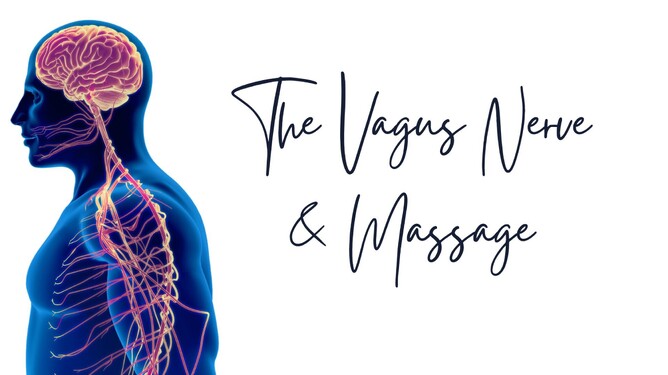At Muscles & Mind, we believe in weaving science-backed techniques with intuitive touch. Vagal nerve massage is a gentle, self-applied practice that engages your body’s innate “rest and digest” response. By tuning into key areas where the vagus nerve travels, you can deepen relaxation, support digestion, and build on emotional resilience.
Why the Vagus Nerve Matters
The vagus nerve is the body’s superhighway between brain and organs. It:
Regulates heart rate, breathing, digestion, immune function, and mood
Balances stress responses by activating your parasympathetic nervous system
Serves as a bridge between physiological well-being and emotional calm
Cultivating healthy vagal tone helps you shift from fight-or-flight into recovery, so you feel grounded and replenished.
Core Benefits of Vagal Nerve Massage
Supports deeper relaxation and eases anxiety
Enhances digestive efficiency and reduces bloating
Lowers inflammation and soothes muscle tension
Promotes balanced heart rate and blood pressure
Encourages restorative sleep and emotional steadiness
These outcomes align with our premium commitment to care that transforms both body and mind.
Three Simple Techniques
Always begin with clean hands, a comfortable seat or reclined position, and a few mindful breaths. Use soft, circular movements—avoid heavy pressure.
1. Auricular Massage (Ear)
Locate the outer edge and middle curve of your ear (tragus and concha).
Gently pinch and roll between thumb and forefinger in small circles for 1–2 minutes per side.
This subtle stimulation taps into the ear’s vagal branch, soothing the nervous system.
2. Lateral Neck Glide
Find the sternocleidomastoid muscle, running from behind the ear to the collarbone.
With fingertips, trace along its outer edge from just below the ear toward the clavicle.
Glide in slow, fluid strokes for 1–2 minutes on each side, steering clear of the carotid sinus under the jaw angle.
3. Diaphragmatic Abdominal Calm
Lie on your back with knees bent and feet flat.
Place one hand beneath your ribcage and the other above your navel.
Press gently inward and upward, then circle clockwise around the belly for 1–2 minutes.
This invites diaphragmatic breathing and supports the digestive facets of the vagus nerve.
Safety and Best Practices
Never apply deep, forceful pressure to the sides of the neck.
If you have cardiovascular conditions, neck injuries, or take blood-pressure medication, consult your healthcare provider first.
Focus on a rhythm that feels soothing. Massage should never cause pain or lightheadedness.
Integrating Into Your Daily Ritual
Combine with a 4-second inhale and 6-second exhale to maximise parasympathetic activation.
Set aside 5 minutes each morning or evening to anchor calm before your day or unwind before sleep.
Layer in complementary practices: gentle yoga, humming, cold-water facial dips, or guided meditation for holistic balance.
Tracking Progress
Keep a brief journal to note shifts in stress levels, sleep quality, and digestive comfort. Over 2–4 weeks, you’ll start to witness subtle yet powerful transformations in your mind-body harmony.
